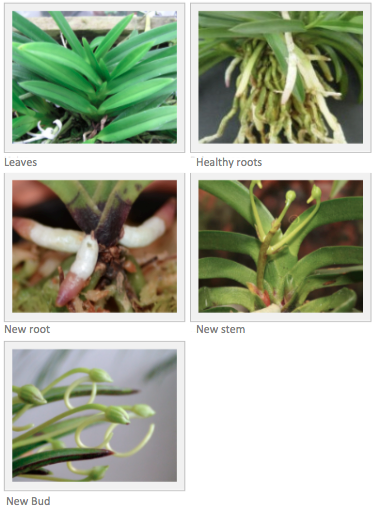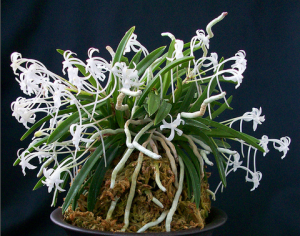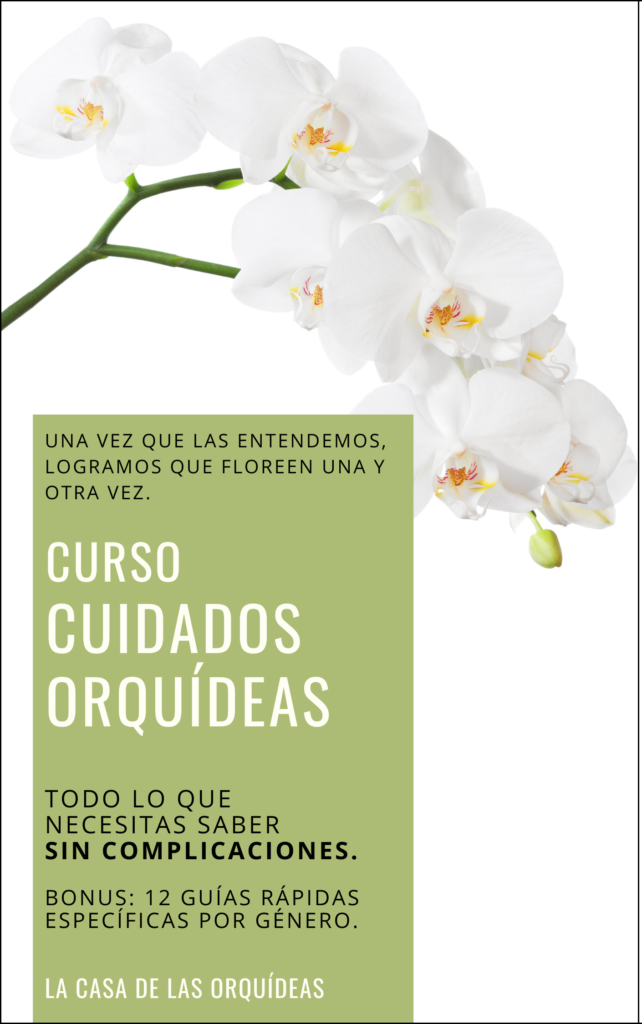+ Spanish
It’s a genus that has only 3 species. Neofinetia falcata is probably the first plant to ever be cultivated as an indoor ornamental plant in Japan in the 1600. It is also known as Samurai Orchid, because the legend tells that around that time the high Samurai, Shogun Tokugawa, was obsessed with this orchid and was the main promoter of it’s search in the mountains and it’s study. Depending in the rareness and age of the plant, it is one of the most expensive orchids in the world, reaching in one auction a selling price of $100,000 us dollars.
They flower between june and july; they smell like jasmine.
In Japan, they grow them in a pile of Sphagnum moss in a little pot. They need lots of humidity; they are easy to grow in semi hydroponics or any other media that will keep them moist.
knowing your orchid:

general care:
 WATER: this orchids like to be constantly humid, specially during the warmer months, but with very good ventilation to the roots. If they experience a dry period, the flowers and buds will wither and fall. In colder seasons, we must only spray or water the plant in sunny days. It’s important to water them only in the mornings with room temperature water so that the leaves and new growths have time to dry before the temperature drops in the evening. Excess water can be a focus of infection and can damage the plant. The frequency of waterings will depend on your climate and the time of the year; waterings should be more frequent and abundant during the hot months and if your climate is dry, you may need to water up to 3 times a week, fertilizing only once a week. During the winter and in cold zones, the watering and the feedings can be spaced every 7 to 10 days to avoid root rot. It will also depend on the type of media you’re growing them in.
WATER: this orchids like to be constantly humid, specially during the warmer months, but with very good ventilation to the roots. If they experience a dry period, the flowers and buds will wither and fall. In colder seasons, we must only spray or water the plant in sunny days. It’s important to water them only in the mornings with room temperature water so that the leaves and new growths have time to dry before the temperature drops in the evening. Excess water can be a focus of infection and can damage the plant. The frequency of waterings will depend on your climate and the time of the year; waterings should be more frequent and abundant during the hot months and if your climate is dry, you may need to water up to 3 times a week, fertilizing only once a week. During the winter and in cold zones, the watering and the feedings can be spaced every 7 to 10 days to avoid root rot. It will also depend on the type of media you’re growing them in.
40% – 60%.
If your HR is to high, it’s very important to have good ventilation to prevent diseases. To increase your HR, please visit our post “Tips to increase Relative Humidity“.
Día: 65ºF – 75ºF
Noche: 58ºC – 64ºC
This genus can resist harsh temperatures, ranging from 41ºF to 98ºF.
It’s ideal that there is a difference of 15ºF to 20ºF between day and night temperatures to promote new growths (leaves, stems and roots). If your temperature is higher that the ideal, you’ll have to increase the RH, airing and waterings, to avoid premature withering of the flowers and buds and the dehydration of your plant.

LUZ MEDIA: Using the Shadow Trick (see Basic Care: Light Issues section), the shadow from your hand should be light grey, not completely defined; if the shadow is darker, that spot is not for this orchid. NEVER IN DIRECT SUNLIGHT!! Ideal locations: east, south or west facing windows with a sheer curtain.
ARTIFICIAL LIGHT: four tube 40 watt fluorescent fixtures placed 6″ to 12″ above the leaves for 10 to 12 hours a day.
These are the IDEAL conditions, however, orchids are more adaptable than we think!! You’ll just have to put a bit more effort accommodating them in their new environment. Look for tips in our Magazine!
to know more about nutrition, growing media and basic care, click below:





